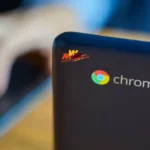As the creative industry rapidly embraces artificial intelligence, questions surrounding copyright and ownership have become increasingly important. Tools like Magic Hour’s text-to-image AI generators offer users an innovative way to produce high-quality visuals quickly and affordably. However, with this convenience comes a growing concern: are these AI-generated images legally safe to use for monetization?
Like many others, Magic Hour, too, is traveling the road of success using AI models, which are extremely powerful and trained on a gigantic amount of visual data. The main point in this respect is how the images used for training the models were obtained. Were copyright protections involved? Would the creators be able to use the images in marketing without legal problems? Only after knowing how Magic Hour deals with these concerns can a person be equipped with the information needed to turn AI-generated content into a stream of income.
There’s so much more to discover—browse our related posts!
The Legal Vacuum of AI-Generated Content
One of the primary difficulties with AI models producing text-to-image is the ambiguity regarding the output’s ownership. Historically, the Copyright Law of most countries was not created bearing in mind the AI (Artificial Intelligence)-generated works. Thus, if a picture, for instance, is designed not to be authored directly by a human being but by an algorithm’s interpretation of it, with current laws, it most probably wouldn’t be able to obtain copyright protection.
Magic Hour solves this problem by letting users keep the entire copyright to the images created with their help, giving a free license to use, modify, and sell the content. Such a decision reassures the users in terms of making money. However, the issue of whether copyrighted images were used in training the underlying model still casts a cloud over it.
When an AI model is trained on copyrighted works that are not used with permission, and those elements can be seen in the output, then it could be a starting point for infringement claims. Magic Hour actively seeks to circumvent this by polishing its training process and filtering out copyrighted material that is recognizable, just like other responsible platforms. However, until international laws step up to the developments brought about by AI, this area of law remains more like a quagmire.
Magic Hour: A Dedicated AI Company, Ethics at the Forefront
Apart from the aforementioned legal vacuums, Magic Hour has made strides to ensure that its text-to-image AI tool is ethical to the fullest extent. The company publicly mentions the responsible development of AI, transparency in how images are generated, and user rights as its mainstays.
Magic Hour is using models that are constructed to avoid the risk of directly copying specific artist styles or recognizable copyrighted material. Their output is generated in a way that blends learned patterns, rather than pulling from or replicating a single source. This significantly reduces the chance that an AI-generated image would be considered a derivative of an existing copyrighted work.
This makes it unlikely that a user would accidentally create a near-copy of a copyrighted image, allowing greater confidence when publishing or monetizing these visuals in books, ad campaigns, or e-commerce platforms.
Monetizing AI-Generated Images with Confidence
Thanks to Magic Hour’s clear usage rights and commercial licensing terms, users of its text to image AI can feel reasonably confident using their generated content for income-generating activities. Whether designing t-shirts, social media ads, digital products, or stock assets, users retain the freedom to sell their work without owing royalties or credit to the platform.
Notwithstanding the above, it is always better to be safe than sorry. Nevertheless, creators should keep away from prompts that directly aim to duplicate well-known characters, celebrities, or trademarked styles. Even if the program does not refer to copyrighted data, the outputs may still unintentionally produce infringement.
By means of generating new ideas, juxtaposing machine output with manual intervention, and getting a grip on the copyright foundation, users are able to use Magic Hour’s images even in their business-based projects without any worry.
Wrap Up
Magic Hour’s text-to-picture AI tool has an attractive aspect of being both creative and legally safe. Not just Magic Hour, no AI platform can give absolute assurances in a legal environment that is quickly changing. However, Magic Hour’s customer orientation, licensing transparency, and responsible product development policies make it comparatively safe for developers who want monetization. With the shifting legal landscape in copyright and technology, we suspect that companies like Magic Hour which manifest ethical practices and clarity, will reign at the top as credible artificial intelligence-enabled innovation.
Hungry for more knowledge? Our full library is open to explore!






